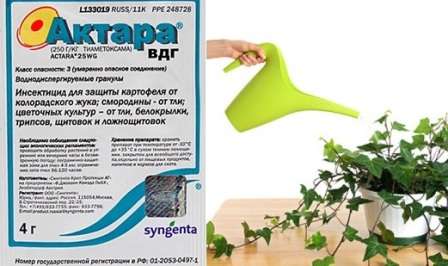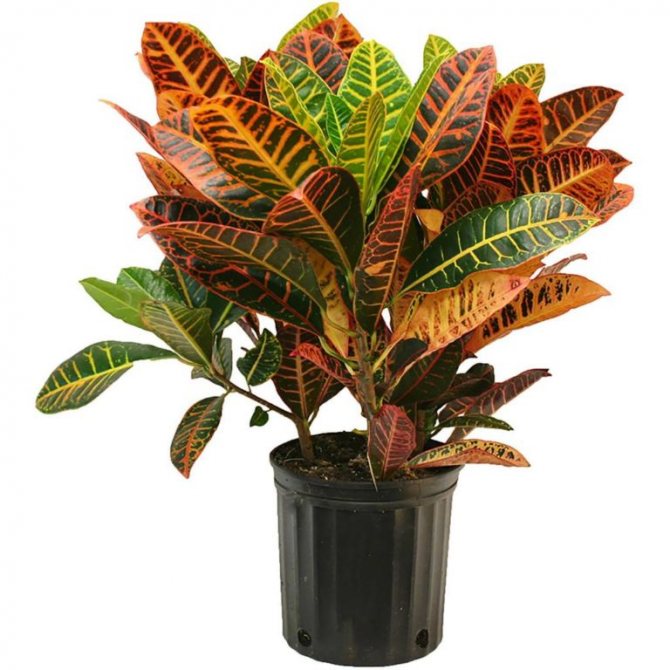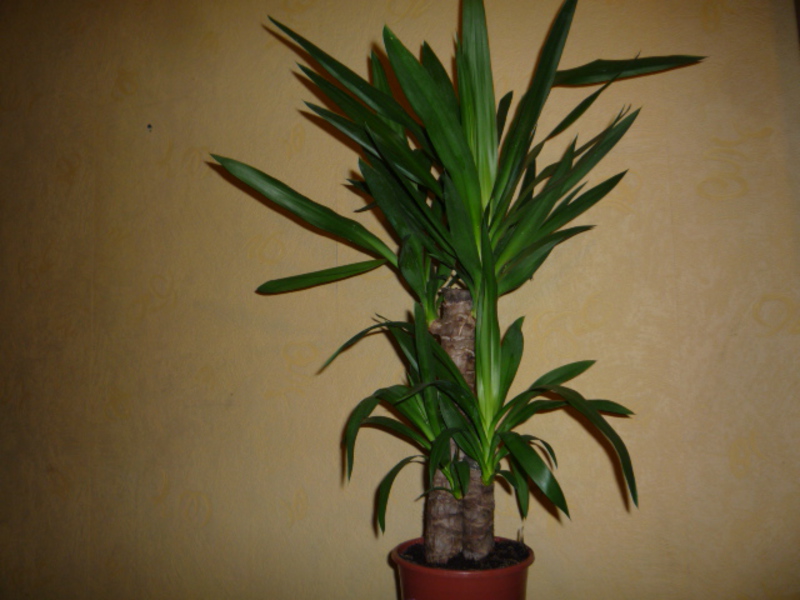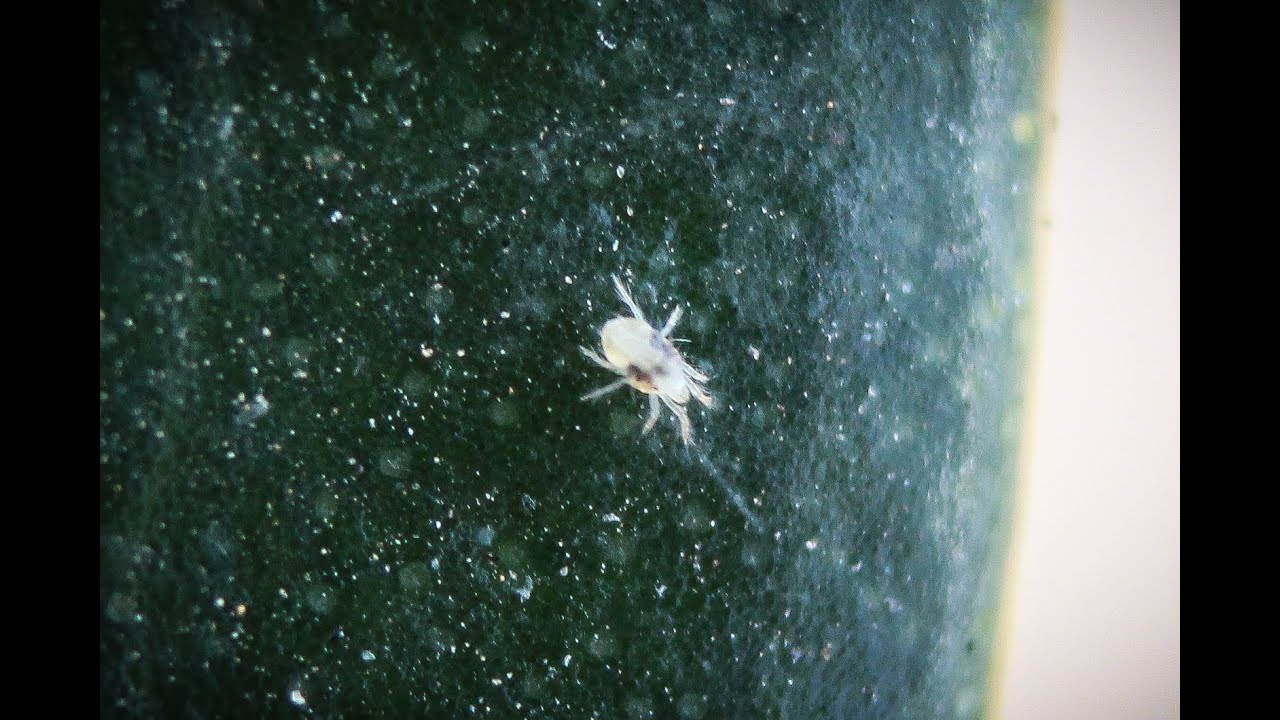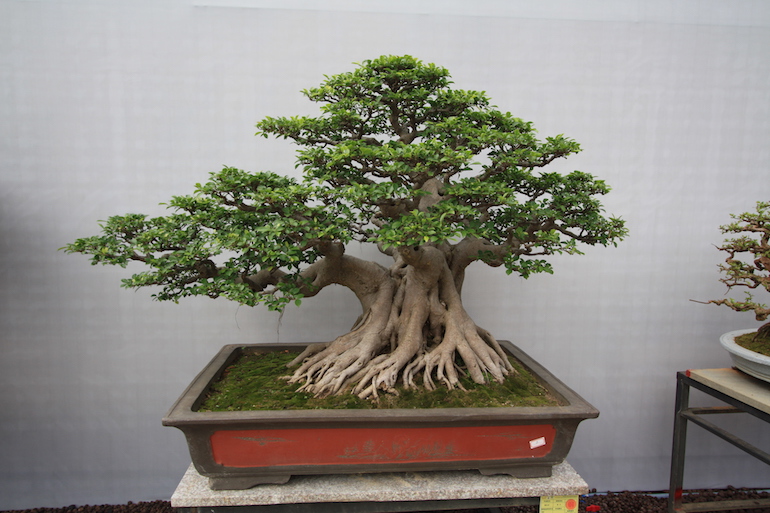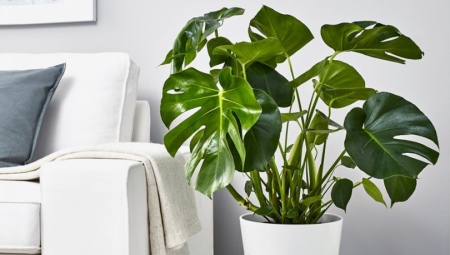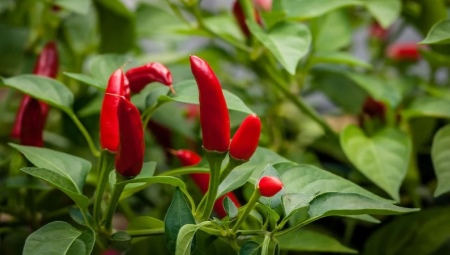How to deal with a pest?
Mild mealybug infestations can be dealt with relatively quickly. It is usually sufficient to clean the plant with a cotton swab or a soft brush dipped in diluted soap. After removing the pests and their white discharge, it is necessary to spray with green soap, infusion, or, repeating it three times with an interval of one week. A good result is obtained from the treatment with alcohol or tincture purchased at the pharmacy.
Instead of repeated spraying, it is permissible to remove the pests with a cotton swab or paper towel dipped in one of these preparations. Both after the end of the procedure must be immediately destroyed - in order to avoid the spread of surviving insects.
From folk remedies
, which are easy to prepare at home, the following can be recommended for spraying:
1. Soap-alcohol mixture:
Crushed soap - 1 teaspoon; - vodka - 2 tablespoons; - water - 1 liter.
Vodka can be replaced with one teaspoon of pure alcohol. Dissolve the soap in a small amount of hot water, add up to a liter and add vodka or alcohol. Spray the whole plant with the resulting composition, excluding it from falling on the substrate. After a day, be sure to wash off using warm water. Repeat after three or four days.
2. Garlic solution:
Garlic - 25 grams; - water - 1 liter.
Mash the garlic and pour over boiling water. Let it brew for six hours, then strain and apply for spraying.
3. Tincture of orange peels: pour a small amount of dry or fresh peels with hot water and leave for two to three days. Spray at intervals of several days.
Chemicals
to fight the worm
If the defeat of the mealybug is strong, washing and removing the pests by hand is no longer enough. We'll have to apply chemical treatments. Since the worm is a sucking insect, contact and combined action preparations will be the most effective to combat it.
1. Aktara - a popular insecticide with an intestinal action. The active substance is thiamethoxam.
2. Actellik - organophosphate non-systemic insectoacaricide. The active ingredient is pirimiphos-methyl. The drug is highly toxic and not suitable for residential use.
3. Bankcol - contact-intestinal insecticide. Its active ingredient is bensultap.
4. Biotlin - contact-intestinal insecticide. It is based on a rather dangerous substance - imidacloprid.
5. Vertimek - non-systemic insectoacaricide of biological origin. The active ingredient is abamectin.
6. Spark "Double Effect"- a preparation based on pyrethroids, which are considered not dangerous for warm-blooded animals and humans. Contains cypermethrin and permethrin. It has an intestinal action.
7. Calypso - a systemic drug belonging to the class of chloronicotinyls. It has both a contact and a pronounced intestinal effect.
8. Confidor-Extra - a systemic drug based on imidacloprid.
9. Tanrek - a broad-spectrum drug based on imidacloprid.
10. Fitoverm - biological insectoacaricide of intestinal and contact action. The main substance is aversectin.
11. Admiral - hormonal insecticide of contact-intestinal action. The main substance is pyriproxyfen.
From purely biological agents against mealybugs, you can use Lepidocide.
Mealybug - one of the most dangerous pests that harm indoor plants.A sucking insect that grows up to five millimeters in length. It mainly damages young shoots and leaf sinuses, and in case of massive damage to the plant, it also damages the leaves. There are both winged and wingless specimens. The latter have an oval-elongated flesh-colored body, along the edges there is a bristle, and the body itself is covered with a mealy bloom of white. Winged specimens have only one pair of wings.
The female mealybug can lay up to two thousand eggs along the veins, in the leaf axils and on the underside of the leaf plate, which are not afraid of water, because have protection in the form of pubescence. The larvae inhabit the entire plant, right down to the roots of the plant, and have the ability to move around throughout their lives. All types of worms secrete a sticky liquid on which a sooty fungus settles. In affected plants, leaves begin to turn yellow and fall off, shoots stop growing, the plant weakens and dies. Pests can accumulate under the bark or under the bulbous scales, making it difficult to find the pest.
Why plant on indoor plants
A favorable environment for the appearance of a pest is:
- excessively dry air;
-
application of contaminated soil
; - excess nitrogen fertilizers;
- lack of hygiene procedures.
The infected specimen begins to wither and lose leaves, it takes on a depressed appearance. On close inspection, small white fluffy lumps can be found on the leaves.
How to deal with a pest
Before fighting harmful insects, infected the flower should be isolated from the rest
... Worms can also move to neighboring flowers, so they should be examined regularly.
The affected areas are treated with soapy water, in which a cotton swab is moistened. Wipe thoroughly all affected areas. If the sheet is badly damaged, it is better to remove it. Alcohol treatment is also detrimental to the insect.
Mealybugs love a dry, hot microclimate. Having created such conditions, they can be lured out of hard-to-reach places and removed. Males do not feed on the flower, but contribute to the reproduction of pests, so they also need to be fought with.
Males are harder to spot
, because they are in the soil near the flower. For them, traps are arranged in the form of sticky tape, which is fixed near the light source.
After the leaves and stems have been thoroughly washed, they are treated with insecticides.
For this, poisons are used in different forms:
- spray;
- sprayers;
- granules;
- sticks;
- oils.
Sprays are sprayed from a specific distance
so as not to damage the pet
The granules are placed in the soil, being careful to protect the roots.
Oils are applied to damaged areas. Healthy leaves do not need to be lubricated, this can disrupt the metabolic process.
Spraying is carried out with the following preparations:
- Aktara;
- Calypso;
- Confidor;
- Tanrek;
- Fitoverm.
We described the procedure for using the latter in detail in the article.
There are other effective drugs
to heal affected pets.
Before using this or that product, you should read the instructions to avoid harm to the plant.
As an additional tool, you can choose one of the popular methods of pest control:
-
to process
affected areas infusion of fragrant tobacco
; - wipe with calendula tincture (available at the pharmacy);
- process with garlic infusion (cut 5 cloves and pour half liters of boiling water over the floor, leave for infusion for 4 hours).
You can use microbiological preparations, in particular - lepidocide
.
Signs that you have a mealybug
reverse side
Since the worm sucks nutrients from the leaves, the leaves can be deformed, and the plant itself is greatly inhibited in growth.
It is necessary to look for a mealybug not only on the leaves, but also in the root system. As it turned out, he does well in pots too.This is why I recently fell in love with transparent pots, so there is less chance that you will miss some "intruder".
First, I cleaned all the leaves of plaque and insects with a cotton pad dipped in a solution of green soap. The soap remaining on the foliage and stems will help the active preparation stay on the green part of the plant, and not safely collect in a droplet and drain from the leaf. Since I did not have time to wait for further manifestations of the mealybug, the next day I treated it with Fitoverm. There are a lot of drugs that are advised for mealybug lesions, but I have been using Fitoverm for a long time, since it gives me positive results.
I make the solution strong enough: 2 ml of the drug per 200 ml of water for spraying and irrigation. First, I thoroughly irrigate the plants, and then pour it under the root. If possible, it is better to change the soil of the infected plant, since I had a recently purchased plant and I was going to change the soil and pot anyway, so I immediately started doing this. I calcine the soil for all my plants in the oven, so that when the soil changes, I do not have any other pests. I even carefully cultivate the store soil.
I washed the roots with Fitoverm and carefully sprayed the green part of the plant. The treated plant can be left in quarantine for a week, after a break, repeat the treatment.
Mealybugs are very difficult to kill because of the waxy coating. Therefore, the poison will only affect young individuals. Adults will have to be filmed manually. Because of this feature, the processing can be repeated from two to five times!
Insecticides to help the florist
In search of how to get rid of a parasitic insect, they resort to using "chemistry". Before using this or that substance, you need to reliably make sure that the pest is really a mealybug. A photo of this particular insect will help identify the parasite.
Pest control, especially at an advanced stage of plant damage, will be most successful with the use of combined action chemicals that kill not only adult insects, but also the laying of eggs and larvae. These are the so-called insecticides (systemic). The drugs are able to penetrate into the plant. Moving along the system of channels, they reach its top, roots. Therefore, wherever the worm is, it will begin to feed on the poisoned juice, then it will die.
The mealybug in the roots can only be destroyed by chemical preparations
White, fluffy, shaggy, wet neoplasms on Benjamin ficus are sprayed with Mosplan. You can use Aktelik, which is characterized by intestinal contact action. Each instant mixture must be prepared following the instructions provided in the instructions. On dracaena, treatment with a frequency of 4 days should be continued until the worm is completely destroyed.
For processing decorative floral greenery, you can alternately use Fazalon and Fitoverm from mealybug. The last preparation of the biological series of IV generation insecticides. They can cure orchid diseases caused not only by the worm, but also by aphids, as well as other harmful organisms.
A number of chemical reagents are supplemented by Mospilan, Confidor-maxi, Ponche. They are divorced simply: 1 g of substance per 1000 ml of water. Plants are not watered too abundantly with these solutions. To prevent the pest from getting used to one poison, after 7 days watering is repeated, but already with Spirotetramat or Aplaud (from a series of new drugs). In terms of the time of exposure to the worm, various chemicals differ. But, in the end, the dried bodies of killed insects are necessarily found on the ground in a flower pot.
Fighting with chemicals
When the early stage is missed, and the invasion of harmful insects is already threatening disastrous consequences, then you have to fight using chemicals.
It is necessary to process the affected indoor flowers and fruit and berry bushes more than once with an interval of several days. The drugs that pests are afraid of work in three directions:
- Systemic poison the juice, while not harming the plant itself (Phosphamide, Rogor, Mospilan).
- Intestinal causes poisoning and digestive disorders (Aktellik, Akarin, Fitoverm, Nurell-D, Aktara).
- Contact act on the skin. Such drugs are used once (Spruzit-AESchadlingsfrei).
We will pay special attention to the most effective chemical means of control. Aktara is a well-known complex drug
The solution must be carefully sprayed onto the plant and watered to provide access to the root system. Aktara begins to fight against hairy insects in half an hour and retains its effect for about a month. mainly suitable for fruit plants. This tool is very effective, but with frequent use it loses its properties, as pests develop addiction. Actara acts on the digestive system and reduces appetite
Aktara is a well-known complex preparation. The solution must be carefully sprayed onto the plant and watered to provide access to the root system. Aktara begins to fight against hairy insects in half an hour and retains its effect for about a month. mainly suitable for fruit plants. This tool is very effective, but with frequent use it loses its properties, as pests develop addiction. Aktara acts on the digestive system and reduces appetite.
It also has a poisonous effect. It does not harm the root system, since it consists of the waste products of soil microorganisms and completely dissolves in the soil. Within a few hours, the pests lose their activity and soon die. The Fitoverm treatment can be repeated after two weeks.
Aktara, Fitoverm, as well as Commander and Golden Spark are considered the most aggressive and effective chemicals. With their help, it is possible to fight even large colonies of mealybugs and those of its varieties that settle in the root system.
Mealybug species
There are more than two thousand species of worms in the world, most of which live in the tropics. In European countries, there are only a little more than three hundred of them. And on the territory of the former Soviet Union, even less: bristly, grape, seaside, citrus and Comstock worm.
Bristleworm
(Pseudococcus longispinus
) reaches a size of 3.5 mm. This is the length of an adult female, males are much smaller. The body shape of this type of worm is elongated-oval, the color can be orange or pinkish with a mandatory white bloom. Both females and males are very mobile - the legs of the insect are well developed and allow it to quickly move from one plant to another. Only females feed. Males are much less common and do not bring much harm. The eggs of the female bristly worm do not lay - they are viviparous.
Bristly worms live on the undersides of the leaves, in the axils and on the tops of tender young shoots. They can settle on bulbs. Affected leaves and shoots turn yellow and lag behind in development. In bulbous plants, scales dry up, under which pests are taken.
Unlike bristly, Grapebug
(Pseudococcus citri
) oviparous. Females have a wide-oval body, yellow or pink, covered with a mealy bloom characteristic of this insect species. The larvae hatched from the eggs instantly spread to the nearest plants, settling along the veins of leaves and on young shoots. With severe damage, they can form huge colonies, quickly sucking out the cellular juices of their host, which leads to wilting and death of the plant.
Primorsky scale
(Pseudococcus affinis
) is considered one of the most common. Adult females reach a length of 4 mm with a body width of up to 2.5 mm. The color is grayish-pink with a white waxy coating.The males of this worm are much smaller and have wings that allow them to move through the air throughout the summer. The eggs of the female seaside worm are laid in white egg sacs, consisting of fluffy spiderweb secretions. If desired, they are not difficult to find in different secluded places: inside swirling leaves, in cracked bark, on branch branches. The larvae of the worm are small and mobile, yellowish in color and completely without white bloom. They are transferred very quickly: on the fur of animals, on the hands and clothes of a person, and simply by the wind. Like adult insects, which these babies will turn into in a month, they suck out the juices of plants, causing their oppression and death.
Worm Comstock
(Pseudococcus comstocki
) Is a rather large insect, up to 0.5 cm long. Its homeland is East Asia, from where it was brought to other countries. During the Soviet era, this dangerous pest was considered a quarantine object, both internal and external. Limited foci of it and now are often found in Kyrgyzstan and Tajikistan, certain regions of the Caucasus and in the south of Kazakhstan. In warm climates, it multiplies very quickly - it is capable of producing three generations a year. Usually hibernates in the ground. It lays eggs in cracks in the bark and in the soil, where it settles down for the winter. One clutch can contain up to 600 eggs. The larvae appear in April and immediately begin to feed on the leaves and shoots of plants. Sometimes even tree trunks, perennial tubers and roots are affected. They quickly spread along with fruits, carried by water and wind contaminated with planting material.
Types of mealybugs
Bristly mealybug
Bristly mealybug (Pseudococcus longispinus) - damages female and larvae plants. The body of an adult female 3.5 mm elongated-oval, orange or pinkish, covered with a white bloom. The worm has well-developed legs, thanks to which they can easily move from plant to plant. Females are viviparous. They usually accumulate in the form of colonies on the underside of the leaf, on branches, in the axils of the leaves and on the young tops of the shoots.
The bristlyworm is a rather large insect, easily visible on the plant due to the white powdery bloom that covers its body and white waxy formations in the form of cotton balls. Damaged leaves turn yellow and fall off. Shoots are stunted. Worms are taken under the bark of citrus fruits and under the scales of bulbs in bulbous ones. Plants damaged by the worm are strongly oppressed, stunted, the leaves turn yellow and fall off. Sooty fungi can settle on the secretions of worms.
Grape mealybug
Grape mealybug (Pseudococcus citri) - the body of a female is broadly oval, pink or yellowish, covered with a white powdery coating. The legs are well developed. Males are very rare. The hatched larvae spread throughout the plant, on shoots, on leaves along the main veins. With a strong defeat, the worms form huge colonies that suck out all the juices from the plant. The leaves turn yellow, the shoots dry out. Sooty fungi settle on the secretions of the worms.
Bristly mealybug (Pseudococcus longispinus). Snehasis Sinha A grape mealybug (Pseudococcus citri). Jeffrey W Primorye mealybug (Pseudococcus affinis). energvmeno
Seaside mealybug
Seaside mealybug (Pseudococcus affinis) is one of the most common types of mealybugs. The body of an adult female is elongated-oval, 3-4 mm long, 2-2.5 mm wide, grayish-pink in color, covered with a white powdery bloom. The legs are well developed.
Males are much smaller, winged, fly all summer. Females lay their eggs in egg sacs, which are a white, fluffy, shapeless mass of waxy spider secretions. Usually, oviparous females hide in secluded places: cracks in the bark, in twisted leaves, in a fork in branches.The larvae are small, mobile, yellow, completely devoid of wax plaque.
They quickly spread throughout the plant, are carried by the wind, man and animals to other plants. The larvae turn into an adult insect in 1-1.5 months. Sucking out all the juices from the plant, they cause stunted growth, and then the death of the plant. Damaged plants grow poorly and do not bloom. Sooty fungi settle on the secretions of the worms. The leaves turn yellow and fall off.
We hope our tips for worm control will help you! We are waiting for your comments!
How to get rid of a pest?
Let's consider several tools:
Chemical
In the period when new individuals were just born, chemical agents have the necessary effect of the highest quality type. This period is the moment when the worms just emerge from the mother's womb or hatch from the egg. At that time, insects had not yet had time to acquire a special protective wax, and their body during this period is quite vulnerable.
The use of chemicals is expressed in the fact that in order to achieve the result it is necessary to exert influence regularly for two weeks. But the main difficulty in eliminating these insects on a plant is that only young individuals can be eliminated with the help of chemicals, and adults will continue to develop and create their own kind.
It is necessary to understand that the longer you delay the process of fighting the larvae, the more difficult and unrealistic it will be for you to remove them.
Attention! Sprayers are most suitable for the destruction of these insects. Getting on the leaves of a particular plant, this medicine is absorbed
Insects, at the same time, suck out the juices of the plant with poison for them.
How to deal with mealybugs and what is suitable for cultivating the land of indoor plants? Effective mealybug drugs are widely available:
- Decis.
- Tsvetofos.
- Vertimek.
- Nurell D.
- Bi-58.
- Phosphamide.
- Actellic.
- Fitoverm.
- Apploud.
Folk
Traditional medicine has a number of ways to eliminate the worm from the plant:
- Horsetail tincture. With the help of it, it is necessary to spray the leaves and add the medicine to the root. This product can be purchased at any pharmacy.
- Spraying with a certain oily substance. The recipe for such a substance is as follows: for one liter of water, you need two tablespoons of olive oil. Further, this content is applied to the leaves of the plant.
- Solution with alcohol and soap. The composition of such a solution includes soap in the amount of 15 grams and alcohol in the amount of 10 milliliters. All this must be added to warm water.
- Garlic tincture.
How to recognize

Mealybug infestation of indoor plants is determined by the following criteria:
- On the surface of the leaves, you can see an incomprehensible nectar in the form of drops.
- On the stems, buds and leaves, as well as in the root zone, colonies of this pest are visible, similar to cotton wool with white cobwebs. There can be many such colonies. The more affected areas, the harder it is to deal with this pest.
- The stem begins to deform, and the growth of the flower is inhibited. At the same time, its appearance deteriorates.
- Leaves curl, turn yellow and begin to fall off as they lack nutrients.
- The action of the mealybug promotes root rot.
- If the fight against this parasite is not carried out in time, then there is a risk of plant death.
- The vital activity of the mealybug is distinguished by one feature: if there are no favorable conditions, then this parasite is capable of being in an inert state for a long time, that is, in a state of suspended animation. When the temperature and humidity reach optimal levels, the mealybug immediately begins to be active, sucking the juices from the plant and continuing to multiply.
Description of the pest

Outwardly, the mealybug is very similar to an ordinary aphid.The insect is large enough to be detected with the naked eye. The body length of adults ranges from 3 to 7 mm. From above, these creatures seem to be sprinkled with flour - a special substance that protects them from drying out, because the worms do not have a solid chitinous apparatus.
It is noteworthy that the females and males of these insects differ significantly in external data. Females have an oval body, which is covered with powdered wax. Females have many short legs and long antennae. Young larvae of the worm are very similar to females, but are much smaller.

Males, on the other hand, are winged, insects, like mosquitoes or crayons of annoying midges. They do not have a mouth apparatus, so they do not feed on flower leaves and harm them.
It is not difficult to recognize the presence of a pest on plants, since the result of its vigorous activity on indoor flowers is the appearance of a specific cotton-like plaque on the leaves. It is in this "fluffy mass" that the female mealybugs lay their eggs. The bottom female is capable of creating a clutch of 500-600 eggs. Such fertility of the insect ensures its rapid spread to neighboring plants.

The mealybug is a pest that sucks the sap of indoor plants, causing a slowdown, and then a complete cessation of the growth and development of a flower. In the course of its stormy life, this parasite secretes honeydew or honeydew. It is a very sticky and sweet liquid and is an excellent medium for the emergence and further development of various fungal diseases, including soot fungus.
Usually, it is not difficult to find worms on plants - they are located in the axils of foliage, on stems and petioles.

